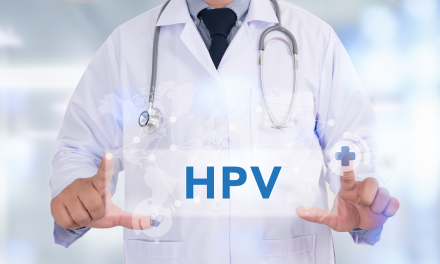A grant by the Missouri Department of Health and Senior Services (DHSS) targets Alzheimer’s Disease and related dementia, with the goal to keep individuals 60 years and older at home who have dementia-related conditions. The Customized Caregiver Training & Relief Program (CCTRP) offers caregivers free care consultations, customized in-home care assessments and training, tools to reduce stress, improve communication, make home safety improvements, and cost reimbursements up to $700 for qualified respite-related expenses. CCTRP incorporates two tracks – Caregiver Training Program and Caregiver Relief Program. The Alzheimer’s Association Greater Missouri Chapter, Memory Care Home Solutions (MCHS), and the Missouri Rural Health Association (MRHA) have partnered to deliver this program to Missourians caring for loved ones with dementia-related conditions. This two-track program consists of the following:
Caregiver Training Program delivered by Memory Care Home Solutions
Enrollment begins with a pre-screening call with a MCHS intake specialist, 314.645.6247. Training includes:
- In-home assessments for individuals with Alzheimer’s disease or related dementias to identify unmet needs and develop a customized training plan for the caregiver.
- Training materials and other resources to help modify activities of daily living (ADLs) in a manner that promotes increased independence for individuals with Alzheimer’s disease and related dementias.
- Follow-up calls and visits to assess the customized plan, recommend plan adjustments as needed, and provide additional resources if necessary.
- Assistive safety devices, when necessary, to help with ADLs and increase the safety and well-being of individuals with Alzheimer’s disease and related dementias.
- Referrals to other community support services and resources as needed.
Caregiver Relief Program
The Alzheimer’s Association Greater Missouri Chapter delivers the Caregiver Relief Program to help caregivers navigate the challenges of caring for a loved one with dementia and also reimburses caregivers up to $700 for the following respite-related services:
- Assessments and care coordination
- Adult day care
- In-home Care
- Nutritional supplements
- Safety and supportive programs
- Education programs
- Counseling services
Enrollment in the Caregiver Relief Program begins with a call to the Alzheimer’s Association 24/7 Helpline (800.272.3900) to set up a free Care Consultation.
Defining the Disease
According to the Alzheimer’s Association, dementia is a general term for a decline in mental ability severe enough to interfere with daily life. Dementia is not a specific disease. It’s an overall term that describes a wide range of symptoms associated with memory decline.
The organization describes Alzheimer’s as the most common form of dementia that accounts for 60 to 80 percent of dementia cases. According to Alz.org, the disease is a progressive brain disorder that damages and eventually destroys brain cells, leading to memory loss and changes in thinking and other brain functions. It usually develops slowly and gradually gets worse as brain function declines and brain cells eventually wither and die. Ultimately, Alzheimer’s is fatal. To date, there is no cure.
The organization also points out that Alzheimer’s is not a normal part of aging, although the greatest known risk factor is increasing age. The majority of people afflicted are 65 and older. “But Alzheimer’s is not just a disease of old age,” according to Alz.org. “Up to five percent of people with the disease have early-onset Alzheimer’s (also known as younger-onset) which often appears when someone is in their 40s or 50s.”
Scientists have identified several “hallmark” brain abnormalities central to the disease:
● Plaques which are microscopic clumps of protein fragment called beta-amyloid.
● Tangles that are twisted microscopic strands of protein tau.
● Connection loss among brain cells responsible for memory, learning, and communication that transmit information from cell to cell.
● Inflammation triggered by the body’s immune system.
● Eventual death of brain cells, leading to severe tissue shrinkage.
Cardiovascular diseases (such as diabetes and high blood pressure), diet, lack of exercise, and family history are among the risk factors for Alzheimer’s. Heart-healthy eating and exercise are two of the best-known ways to lower the risk for developing the disease.
Alzheimer’s Disproportionately Affects Women
Maria Shriver, a journalist, activist, children’s book author, and former first lady of California, is also a strong Alzheimer’s advocate. She calls herself a child of Alzheimer’s because her father had the disease.
“I was doing a women’s conference while I was first lady of California,” she said, “and started programming sessions on caregiving and women, and all of a sudden, I saw these rooms packed. So, I went to the Alzheimer’s Association and I said, ‘let’s do a report on Alzheimer’s – who has it, what it is and how can we communicate it better.’ We found that two-thirds of the brains that had Alzheimer’s were women. That was news to everybody, including the Alzheimer’s Association. Very few people realize that Alzheimer’s predominantly affects women.”
Experts have branded Alzheimer’s as one of the most feared diseases. Others criticize the U.S. government for not doing more to help with research and education. In recent years, Alzheimer’s, though still obscure in many ways, has gotten more attention. Thanks to the efforts of Shriver and the Alzheimer’s Association, here is some of what we now know:
All Cases
● Alzheimer’s is the sixth leading cause of death in the U.S.
● Every 66 seconds someone is diagnosed with the disease.
● One in three seniors die from the disease and other forms of dementia.
Women
● An estimated 3.2 million women aged 65 and older live with it.
● At age 65, women without Alzheimer’s have more than a 1 in 6 chance of developing the disease during the remainder of their lives, compared with a 1 in 11 chance for men.
Shriver said a woman in her 60s is twice as likely to get Alzheimer’s as breast cancer. “It is also in your brain for 20 years before it is diagnosed,” she said. “Women who are 40, they should pay attention to this. Women who are 50 should start investigating this disease and educating themselves. There are things they can do to perhaps delay it or help to find a cure.”
There are several unproven notions about why women are more susceptible to the disease. One theory targets hormones. Women’s hormones have the capacity to ebb and flow—even surging and crashing during and after pregnancy—with significant hormone loss during perimenopause. With diminished hormone levels, the area around the hippocampus in the brain starts to wither. This causes memory issues which could lead to Alzheimer’s. In contrast, men’s hormone loss is usually a slow, gradual process.
Another speculation is that stress affects women differently than men, which may also lead to the disease. “Every woman goes through this disease differently,” Shriver said. “Now we are looking for therapies that could work for everybody independently.”
Detection and Treatment
Specialists in the field are asking people to start taking tests at home to help detect Alzheimer’s and dementia. The Alzheimer’s memory test, commonly referred to as the SAGE test or the Self-Administered Geocognitive Examination, evaluates thinking abilities and helps physicians know how well the brain is working from year to year. Only a pen and paper are needed to take the test. The SAGE test can be accessed at https://wexnermedical.osu.edu/brain-spine-neuro/memory-disorders/sage.
According to Alz.org, there are five FDA-approved Alzheimer’s drugs that temporarily help with memory and thinking problems in about half of the people who take them. These medications do not treat the underlying causes of Alzheimer’s, however.
There are drugs in development with the intent to modify the disease process by impacting one or more of the wide-ranging brain changes Alzheimer’s causes. These drugs offer the potential to stop or slow disease progression. Experts and researchers in the field believe treatment will require a cocktail of medications aimed at several targets, similar to the state-of-the-art treatments for many cancers and AIDS.
A Call to Action
By 2050, it is predicted the number of people age 65 and older with Alzheimer’s may nearly triple, from 5.2 million today to a projected 13.8 million. Other projections range as high as 18 million.
“Despite increasing momentum in Alzheimer’s research, we still have two main obstacles to overcome,” said Bill Thies, Ph.D, Senior Scientist in Residence, Alzheimer’s Association. “First we need volunteers for clinical trials. Volunteering to participate in a study is one of the greatest ways someone can help move Alzheimer’s research forward. Second, we need a significant increase in federal research funding. Investing in research now will cost our nation far less than the cost of care for the rising number of Americans who will be affected by Alzheimer’s in the coming decades.”








